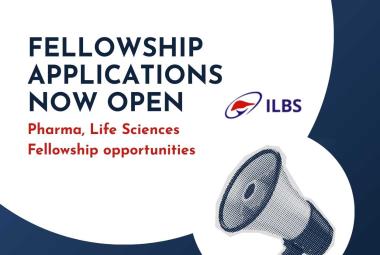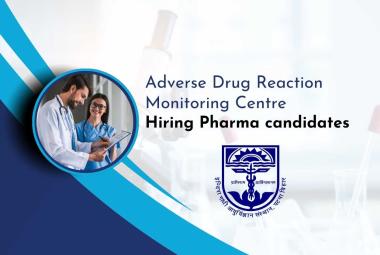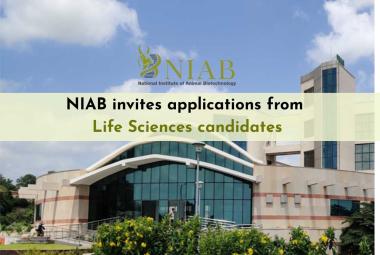{ DOWNLOAD AS PDF }
 ABOUT AUTHORS:
ABOUT AUTHORS:
Monjur Ahmed Laskar*, Manabendra Dutta Choudhury
Bioinformatics Centre, Assam University,
Silchar, Assam, India
monjur@bioinfoaus.ac.in
ABSTRACT
Plants have been used in treating cardiovascular diseases (CVD) and are recognized for their ability to produce secondary metabolites. Secondary metabolites obtained from different plants have been the starting material for designing different drugs. Echinosystic acid, a pentacyclic triterpene was isolated and identified from the fruits of Gleditsia sinensis Lam. Echinosystic acid has significant cardioprotective effects. Different phytochemicals have been found to be cardioprotective and paved the path towards development of cardioprotective formulations. In the present study we have analyzed the inhibitory potential of Echinosystic acid, on the Angiotensin Converting Enzyme (ACE) - the enzyme responsible for various cardiovascular diseases.
The study revealed that Echinosystic acidhave high ACE inhibiting potential as compared to other known ACE inhibitors.
[adsense:336x280:8701650588]
REFERENCE ID: PHARMATUTOR-ART-2290
|
PharmaTutor (ISSN: 2347 - 7881) Volume 2, Issue 12 How to cite this article: MA Laskar, MD Choudhury; Angiotensin Converting Enzyme inhibitory potential of Echinosystic acid relevance to Cardiovascular diseases: An in silico study; PharmaTutor; 2014; 2(12); 107-113 |
INTRODUCTION
Cardiovascular disease (CVD) refers to any disease that affects the cardiovascular system, principally cardiac disease, vascular diseases of the brain and kidney, and peripheral arterial disease. Diseases of the cardiovascularsystem include those that compromise the pumping ability of the heart, cause failure of the valves, or result in narrowing or hardening of the arteries. Injury or failure of the cardiovascular system, especially the heart, also affects the peripheral tissues that depend on the delivery of nutrients and the removal of wastes through the blood vascular system. CVD is a family of diseases that includes hypertension, atherosclerosis, coronaryheart disease, and stroke [1] Angiotensin Converting Enzyme is the prime target for preventing CVD as the enzyme catalyses conversion of Angiotensin I into Angiotensin II [2] Angiotensin II is a vasoconstrictor that causes blood vessels to constrict thereby causing hypertension [3]. ACE is expressed in small pulmonary arteries normally [4]. However, during diabetes, obesity, hypertension the expression and activities of the enzyme increases in small pulmonary arteries [4]. This led to the development of ACE inhibitors which show significant cardioprotection through decreasing hypertension [5,6&7]. This also relieves other hypertension linked ailments like kidney diseases, diabetes etc.[8]
Meanwhile, herbal based secondary metabolites are constantly being screened for drug discovery with respect to ACE inhibition. Echinosystic acid has been reported to be cardioprotective [9]. We, therefore, thought it prudent that Echinosystic acid may inhibit ACE and thus provide cardioprotection. We validate the hypothesis using computational tools.
[adsense:468x15:2204050025]
MATERIALS & METHOD
The Ligands
Echinosystic acid was selected for study using available literature, the structure of the ligand was drawn using Chemsketch [10], a chemically intelligent drawing interface freeware was used to construct the structure of the ligands. The three dimensional structure of the compound in PDB formats was generated and converted to SMILES using OpenBabel [11] and then converted to .sdf format again using OpenBabel. Known ACE inhibitors Benazepril, Captopril, Enalapril, Fosinopril, Imidapril, Lisinopril, Quinapril, Ramipril, Trandolapril and Zofenopril [12] were used as reference. The structures of these inhibitors were obtained from NCBI PubChem Compound (ncbi.nlm.nih.gov/pccompound).
ADME/Tox Screening
ADMET screening helps in detecting rug likeliness of compounds [13]. ADMET (Absorption, Distribution, Metabolism, Excretion and Toxicity) screening was done using Mobyle@rpbs server [14]. The compounds were loaded in the server in SMILES format using the following parameters:
Molecular weight: min 200.0 max 600.0,
Hydrogen donors : min 0.0 max 6.0,
Hydrogen acceptors : min 0.0 max 12.0,
Flexible bonds : min 0.0 max 15.0,
Rigid bonds : min 0.0 max 50.0,
Ring number : min 0.0 max 7.0,
Ring size : min 0.0 max 12.0,
No. of Carbons: >2,
Hetero atoms: >2,
Ratio carbon/hetero : min 0.1 max 1.0,
Charge number : min 0.0 max 3.0,
Total charge : min -2.0 max 2.0,
log P : min -2.0 max 6.0,
Polar Surface Area : min 0.0 max 150.0
The receptor
The crystal structure of the drug target Angiotensin Converting Enzyme (PDB ID: 1O8A) was obtained from RCSB Protein Data Bank (rcsb.org). The protein has one chain (Chain A) of 589 residuesdetermined by X-ray diffraction method at a resolution of 2.00 Å. It was deposited by: Natesh et al., in the year 2002.
Active site identification
The PDB file was loaded into Q-Site Finder to identify the active site amino acids at default parameter setting [15].
Protein – Ligand interaction using FlexX
Docking is a term used for computational schemes that attempt to find the best matching between two molecules: a receptor and ligand [16]. The receptor Angiotensin Converting Enzyme (ACE) was docked with the known ACE inhibitors and Echinosystic acid using software FlexX [17]. The active site amino acids were defined in the target molecule during the target preparation and residues within a radius of 10 Å were included within binding site. The SDF file of all the compounds was loaded in FlexX as docking library. The output file gave the energy values in Kcal/mol. For each docked molecule, this value was noted down.
RESULTS
ADMET screening revealed that Echinosystic acid was non-toxic and obeyed Lipinski’s rule (Table:1).
The docked ligand-target complexes were analyzed carefully to identify the interactions. The docking score (Table2 and Table:3) was noted down and docking poses were saved for reference (Figure 1).
Comparative analysis ACE inhibitory potential of Echinosystic acidand known inhibitors: From the docking score of Echinosystic acidand the known inhibitors it was found that Echinosystic acid have much more binding affinity compared to the known ACE inhibitors.
DISCUSSION
While considering better ligands, the least score in docking was preferred as it indicates more stability in binding [18]. The interaction of Echinosystic acidwas screened based on hydrogen bonding based prediction [19] which shows they binds to the active site residues i.e., ASP377, HIS 383, GLU384, HIS387, GLU162, TYR523, VAL518 etc. which was confirmed by the bonded residues in Flex-X.
After choosing Echinosystic acidas better option on the basis of docking score and bonding pattern, cross validation was done by target fishing using Pharm mapper software and found that the target comes in suitable range. This analysis indicates suitability of the chosen ligand for the target in one hand and validate the docking result obtained from Flex X.
Angiotensin Converting Enzyme (ACE) produce Angiotensin II - a very potent chemical that causes hypertension [20]. By decreasing the production of angiotensin II through inhibiting the activity of the enzyme ACE, the function of a failing heart can be improve and thus the chances of hypertension and other CVDs can be reduce.Since, Echinosystic acidbinds to the active sites of the enzyme ACE and forms stable bonds therefore; Echinosystic acidmay be used as Angiotensin Converting Enzyme inhibitor. Echinosystic acidshows stable bonding pattern in compare to known inhibitors as it shows least score in docking, forms maximum number of hydrogen bonds with the active residues of the enzyme, therefore Echinosystic acidhave more ACE inhibitory potentials.
CONCLUSION
Based on present observation of docking score of both Echinosystic acidand known inhibitors, we suggests that Echinosystic acidmay be Angiotensin Converting Enzyme targeted potent new drug for treating Cardiovascular diseases. However, further studies are required to validate the same in vivo or in vitro.

Figure 1: Binding patterns of Echinosystic acid with Angiotensin Converting Enzyme
Table legends:
Table-1: ADMET Properties of Echinosystic acid
|
Parameters |
MW |
Drs |
Ars |
FB |
RB |
#R |
RL |
C |
Hetero atoms (H) |
C/H |
#Chrg |
Chrg |
LogP |
PSA |
|
Parameter standards |
200-500 |
0-6 |
0-12 |
0-15 |
0-50 |
0-7 |
0-12 |
5-12 |
>2 |
0.1-1.0 |
0-3 |
(-2)-2 |
(-2)-6 |
0-150 |
|
Echinosystic acid |
311.3 |
5 |
8 |
9 |
8 |
1 |
6 |
14 |
8 |
0.21 |
1 |
1 |
0.53 |
128.63 |
MW : Molecular weight, Drs : Donors, Ars : Acceptors, FB : flexible bonds, RB : Rigid Bonds, #R : Ring Number, RL : Ring Length, C : carbons, nC : non carbons, C/nC : ratio non carbons/carbons, #Chrg : number of charges, Chrg: Total Charge, LogP : logP (octanol / water), PSA: Polar surface area.
NOW YOU CAN ALSO PUBLISH YOUR ARTICLE ONLINE.
SUBMIT YOUR ARTICLE/PROJECT AT editor-in-chief@pharmatutor.org
Subscribe to Pharmatutor Alerts by Email
FIND OUT MORE ARTICLES AT OUR DATABASE
Table-2: Docking of Echinosystic acid with Angiotensin Converting Enzyme
|
Compound |
Total Score (Kcal/mol) |
Bond Properties |
|
|
Bonds |
Bond Energy (Kcal/mol) |
||
|
Echinosystic acid |
-32.3169 |
ASP 377 – H43 |
-8.3 |
|
ASP 377 – H43 |
-8.3 |
||
|
GLU 162 – H 40 |
-4.8 |
||
|
GLU 162 – H 40 |
-7.8 |
||
|
TYR 523 - O 4 |
-4.5 |
||
|
HIS 383 - H 33 |
-2.6 |
||
Table-3: Docking result of known Angiotensin Converting Enzyme inhibitors
|
Compounds |
Total Score (Kcal/mol) |
Hydrogen Bond Properties |
|
|
Hydrogen Bonds |
Bond Energy (Kcal/mol) |
||
|
Benazepril |
-13.1522 |
GLU 411 - H 38 |
-4.5 |
|
GLU 411 - O 1 |
-4.3 |
||
|
HIS 383 - O 1 |
-4.7 |
||
|
HIS 513 - O 4 |
-4.6 |
||
|
HIS 387 - H 59 |
-2.2 |
||
|
Captopril |
-21.8193 |
HIS 383 -O 2 |
-4.7 |
|
GLU 411 - O2 |
-4.7 |
||
|
TYR 523 - O2 |
-3.5 |
||
|
HIS 513 - O3 |
-2.6 |
||
|
HIS 353 - O3 |
-4.7 |
||
|
Enalapril |
-23.6967 |
GLU 384 - O4 |
-3.6 |
|
HIS 383 -O 5 |
-4.7 |
||
|
GLU 411 - O5 |
-4.7 |
||
|
TYR 523 - O5 |
-4.0 |
||
|
GLU 411 - H55 |
-3.2 |
||
|
ARG 522 - O3 |
-4.0 |
||
|
Imidapril |
-13.0579 |
HIS 383 -O 5 |
-2.5 |
|
GLU 411 - O5 |
-4.7 |
||
|
GLU 384 - O3 |
-4.7 |
||
|
TYR 523 - O5 |
-2.4 |
||
|
Lisinopril |
-22.7837 |
HIS 383 -O 5 |
-4.7 |
|
GLU 411 - O5 |
-4.7 |
||
|
TYR 523 - O5 |
-2.9 |
||
|
HIS 387 - O4 |
-4.7 |
||
|
GLU 411 - H59 |
-4.3 |
||
|
ARG 522 - O3 |
-3.0 |
||
|
ALA 356 - H52 |
-4.1 |
||
|
Perindopril |
-15.3663 |
HIS 383 - O2 |
-4.7 |
|
GLU 411 - O2 |
-4.7 |
||
|
GLU 384 - O3 |
-4.7 |
||
|
HIS 513 - O5 |
-4.5 |
||
|
ALA 354 - H58 |
-4.4 |
||
|
Quinapril |
-17.6071 |
HIS 383 - O3 |
-4.7 |
|
GLU 411 - O3 |
-3.8 |
||
|
TYR 523 - O3 |
-2.8 |
||
|
GLU 384 - O2 |
-4.2 |
||
|
ALA 356 - O5 |
-2.5 |
||
|
Ramipril |
-14.2360 |
HIS 383 - O5 |
-4.7 |
|
GLU 411 - O5 |
-4.7 |
||
|
TYR 523 - O5 |
-3.8 |
||
|
GLU 384 - O4 |
-3.5 |
||
|
HIS 357 - H43 |
-2.7 |
||
|
Trandolapril |
-2.9183 |
TYR 523 - O3 |
-4.6 |
|
GLU 384 - O2 |
-4.7 |
||
|
Zofenopril |
-14.6572 |
HIS 383 - S1 |
-2.9 |
|
GLU 411 - S1 |
-2.7 |
||
|
TYR 523 - S1 |
-3.1 |
||
|
ALA 356 - O4 |
-4.0 |
||
|
ARG 522 - O6 |
-3.2 |
||
Acknowledgements:
The authors are thankful to Department of Biotechnology (DBT), Govt. of India, New Delhi for establishing Bioinformatics Centre in Assam University, Silchar where the work has been carried out. e-journal access facility provided by Bioinformatics centre, Assam University funded by Department of Biotechnology, Govt. of India is highly acknowledged.
Conflict of interest statement: The authors declare no conflict of interests.
REFERENCES
1. Finegold J.A., Asaria P., Francis D.P; Mortality from ischaemic heart disease by country, region, and age: statistics from World Health Organisation and United Nations. Int J Cardiol 2013; 168(2):934-45.
2. Shi L., Mao C., Xu Z., Zhang L; Angiotensin Converting Enzyme and drug discovery in cardiovascular diseases. Drug Discovery Today 2010; 15:332-341.
3. Sridevi P., Prashanth K.S., Bhagavan M.R; Angiotensin Converting Enzyme: A Target for Anti-Hypertensive Drugs. Int J Res Pharm Biomed Sc 2011; 2:63-72.
4. Morrell N.W., Atochina E.N., Morris K.G., Danilov S.M., Stenmark K.R; Angiotensin converting enzyme expression is increased in small pulmonary arteries of rats with hypoxia-induced pulmonary hypertension. J Clin Invest 1995; 96 (4):1823-33.
5. Healey J.S., Baranchuk A., Crystal E., Morillo C.A., Garfinkl M., Yusuf S., Connolly S.J; Prevention of Atrial Fibrillation With Angiotensin-Converting Enzyme Inhibitors and Angiotensin Receptor Blockers. J Am Coll Cardiol 2005; 45:1832–9.
6. Peng H., Carretero O.A., Vuljaj N., Liao T.D., Motivala A., Peterson E.L, Rhaleb N.E; Angiotensin-Converting Enzyme Inhibitors: A New Mechanism of Action. J Am Heart Assoc 2005; 112:2436-2445.
7. Khalil M.E., Basher A.W., Brown E.J., Alhaddad I.A; A Remarkable Medical Story: Benefits of Angiotensin-Converting Enzyme Inhibitors in Cardiac Patients. J Am Coll Cardiol 2001; 37(7): 1757-1764.
8. O’Keefe J.H., Wetzel M., Moe R.R., Brosnahan K., Lavie C.J; Should an Angiotensin Converting Enzyme Inhibitor Be Standard Therapy for Patients With Atherosclerotic Disease? J Am Coll Cardiol 2001; 37:1–8.
9. Wu J., Li J., Zhu Z., Li J., Huang G., Tang Y., Gao X; Protective effects of echinocystic acid isolated from Gleditsia sinensis Lam. against acute myocardial ischemia. Fitoterapia; 2010; 81: 8–10.
10. Laskar M.A., Choudhury M.D., Chetia P; In silico screening of cardioprotective activity of some flavonols. International Journal of Pharmacy and Pharmaceutical Sciences; 2014; 6(2):528-531.
11. O'Boyle N.M., Banck M., James C.A., Morley C., Vandermeersch T., Hutchison G.R; Open Babel: An open chemical toolbox, J Chem Inf 2011; 3:33.
12. Brown N.J., Vaughan D.E; Angiotensin-Converting Enzyme Inhibitors. J Am Heart Assoc 1998; 97:1411-1420.
13. Yu H., Adedoyin A; ADME–Tox in drug discovery: integration of experimental and computational technologies. Drug Discovery Today 2003; 8 : 852–861.
14. Neron B., Menager H., Maufrais C., Joly N., Maupetit J., Letort S., Carrere S., Tuffery P., Letondal C; Mobyle: a new full web bioinformatics framework. 2009; 25: 3005-3011.
15. Laurie A.T., Jackson R.M; Q-SiteFinder: an energy-based method for the prediction of protein-ligand binding sites. Bioinformatics 2005;21: 1908-1916.
16. Krovat E.M., Steindl T., Langer T; Recent advances in docking and scoring. Curr. Comp. Aided Drug Design 2005; 1: 93-102.
17. Sherborne B.S., Wilkinson T., Bennett J., Borkakoti N., Broadhurst M., Hurst D., Kilford I., McKinnell M., Jones P.S; Discovery of novel low molecular weight inhibitors of IMPDH via virtual needle screening. Bioorg Med Chem Lett 2003;13:1691-1694.
18. Forino M., Jung D., Easton J.B., Houghton P.J., Pellecchia M; Virtual Docking Approaches to Protein Kinase B Inhibition. J. Med. Chem 2005; 48: 2278-2281.
19. Bikadi Z., Demko L., Hazai E; Functional and structural characterization of a protein based on analysis of its hydrogen bonding network by hydrogen bonding plot. Arch Biochem Biophys 2007; 461:225-234.
20. Riordan J.F; Angiotensin-I-converting enzyme and its relatives, Genome Biology 2003; 4:225.1-225.5.
NOW YOU CAN ALSO PUBLISH YOUR ARTICLE ONLINE.
SUBMIT YOUR ARTICLE/PROJECT AT editor-in-chief@pharmatutor.org
Subscribe to Pharmatutor Alerts by Email
FIND OUT MORE ARTICLES AT OUR DATABASE









